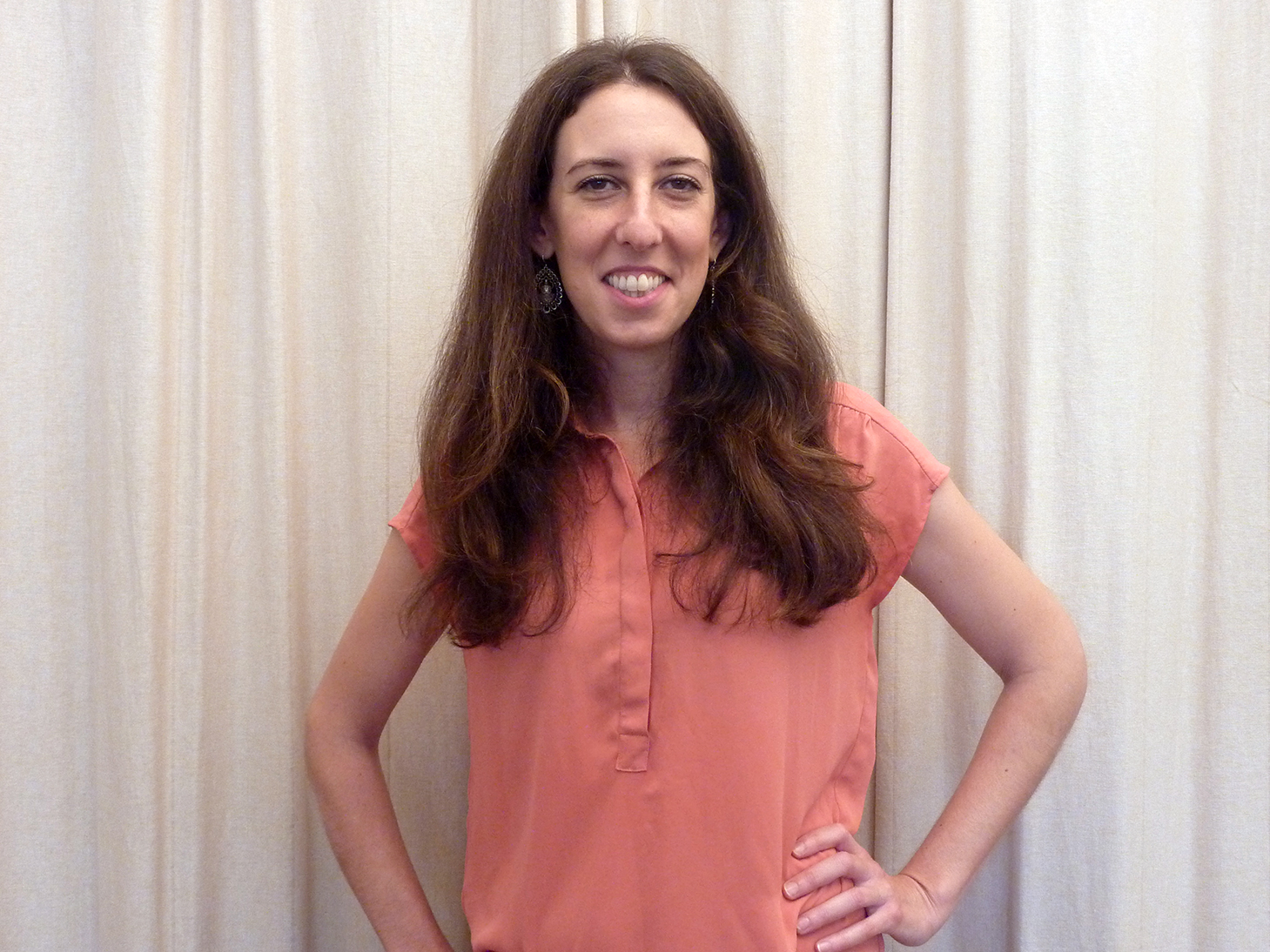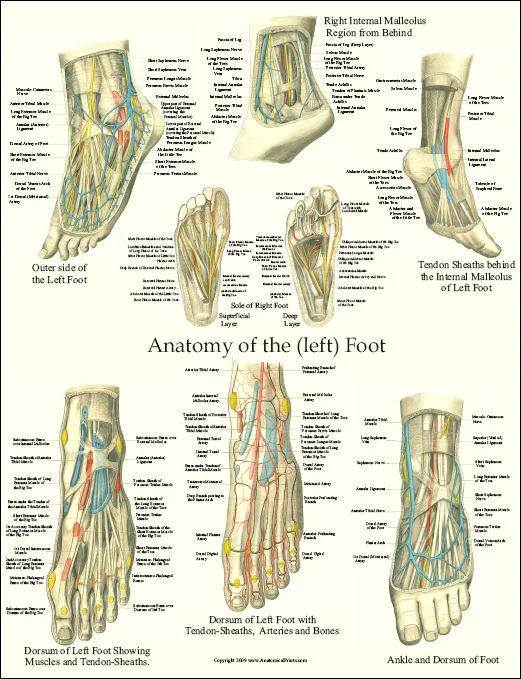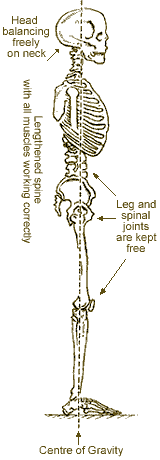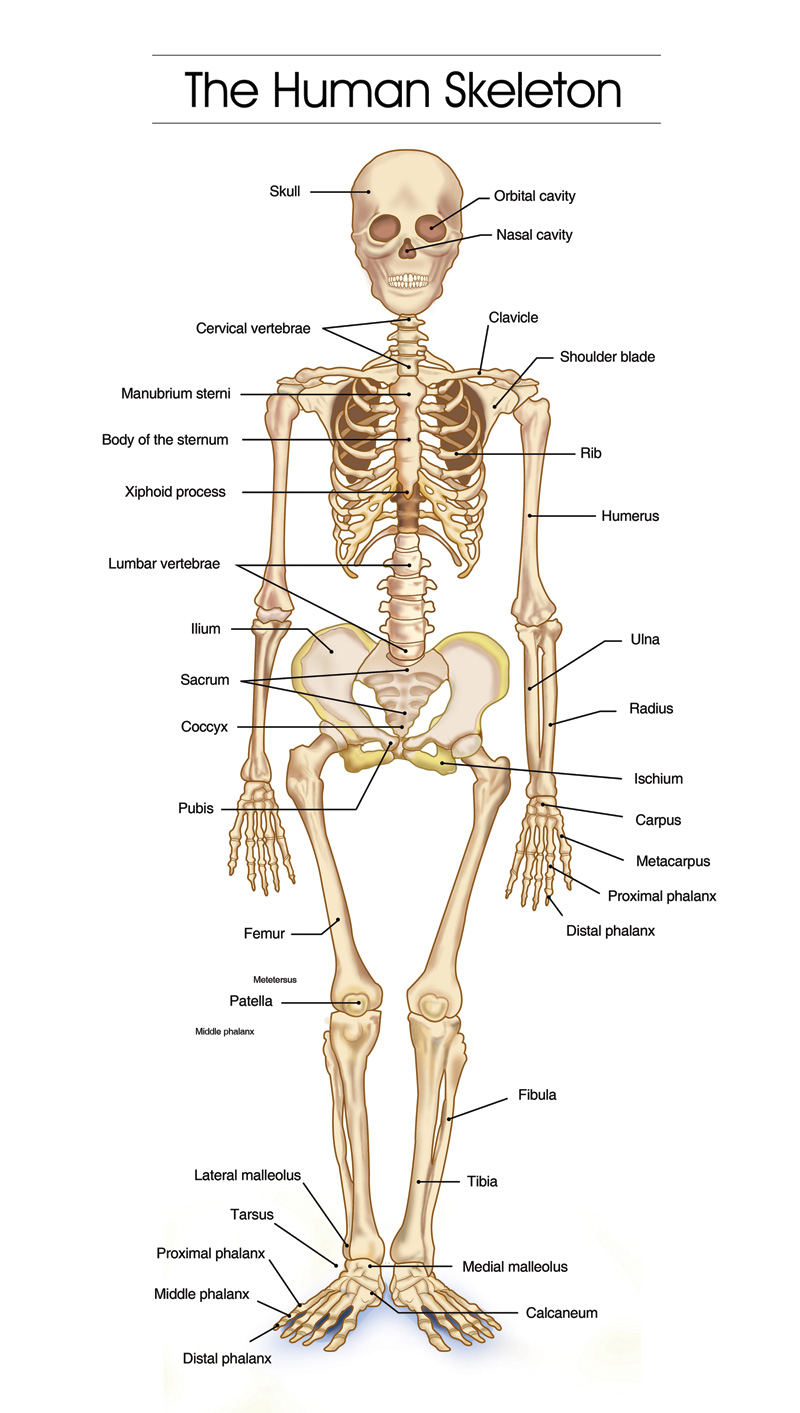Try This: A Balancing Act
Find a quiet place where you can concentrate for a few minutes. You can even shut yourself in a bathroom stall, just for a moment, if you need to get away from it all.
Feel your feet on the floor, at a comfortable distance from each other. (It's helpful if you are wearing relatively flat and comfortable shoes.) If you're at home, go barefoot in your living room or out on a patch of grass!
Balance your pelvis over your feet. Now balance your shoulders over your pelvis. Now balance your head atop your spinal column, allowing the weight to cascade down through the front of the spine. If you need to readjust the placement of your pelvis, shoulders, or feet, feel free to do so-- where can you find a place where you feel "balanced"? How does your weight balance on your two feet as they spread out onto the floor?
How much tension can you allow to flow out of your body and still remain standing? You'll be surprised. Your skeleton is remarkably well balanced. You don't need to hold your shoulders up, or your butt in, or your legs tense.
Now for one more element-- you don't need to "hold still." Our bodies are always moving! Our blood circulates, our lungs breathe; why, in tiny microscopic ways we are growing hair and skin and fingernails! Balance isn't static. Think of balancing as an ongoing process. You can allow your body to sway, to shift, to readjust as you continue to seek balance.
- Erika Iverson





















